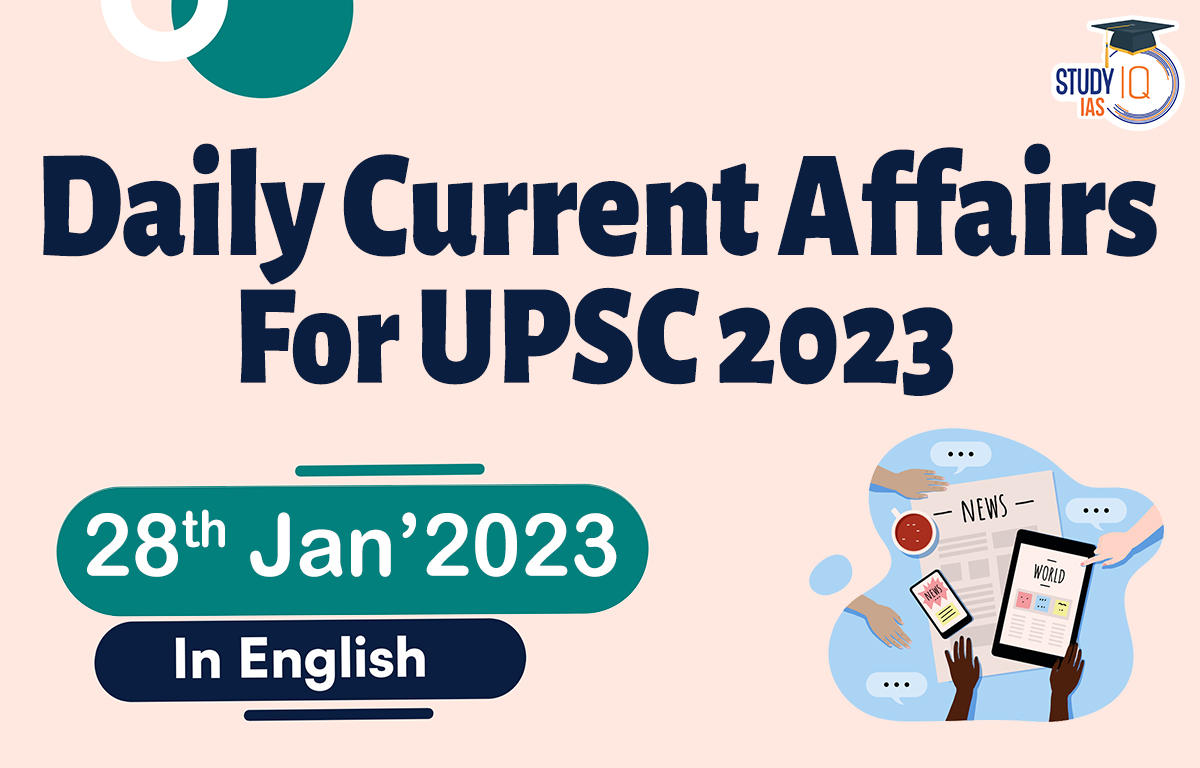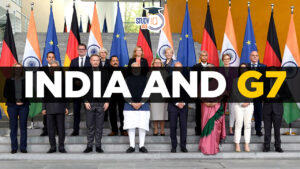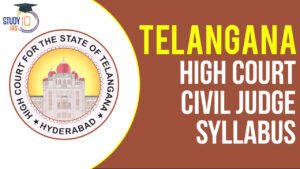Daily Current Affairs for UPSC 2023
Q) Recently seen in news, the ‘Global Report on Trafficking in Persons 2022’ report is released by which one of the following organisation?
- World Economic Forum
- International Institute of Social Studies
- International Criminal Police Organization
- United Nations Office on Drugs and Crime
Daily Current Affairs for UPSC – 27 January 2023
Explanation:
- Option (4) is correct: Recently, The United Nations Office on Drugs and Crime (UNODC) has published the ‘Global Report on Trafficking in Persons 2022’. The report is the seventh of its kind mandated by the General Assembly through the 2010 United Nations Global Plan of Action to Combat Trafficking in Persons. This edition of the Global Report provides a snapshot of the trafficking patterns and flows detected during the COVID-19 pandemic. It covers 141 countries and provides an overview of the response to the trafficking in persons at global, regional and national levels, by analyzing trafficking cases detected between 2018 and 2021.
- Major findings of the report
- The number of trafficked victims detected globally fell by 11 per cent in 2020 from the previous year, driven by lesser detections in low- and medium-income countries.
- The most significant drops in detection were recorded in trafficking for the purpose of sexual exploitation (down by 24 per cent) and in cross-border trafficking (down by 21 per cent).
- The pandemic, in addition to reducing opportunities for traffickers to operate, may have weakened law enforcement capacities to detect victims.
- The report shows that the war in Ukraine is elevating trafficking risks for the displaced population.
- In 2021, 23.7 million people were internally displaced by disasters, while many crossed borders to escape climate-induced poverty.
Q) With reference to the Indus Waters Treaty (IWT), consider the following statements:
- It is a United Nations mediated treaty between India and Pakistan to use the water available in the Indus River and its tributaries.
- The treaty allows India to use western river waters for limited irrigation use and unlimited non-consumptive use such as power generation, navigation and fish culture.
- Pakistan has repeatedly raised objections against the Kishanganga Hydroelectric Power Project on the Neelum River a tributary of the Beas River.
Which of the statements given above is/are correct?
- 1 only
- 2 only
- 1 and 3 only
- 1,2 and 3
Explanation:
- Statement 1 is incorrect: The Indus Waters Treaty (IWT) is a water-distribution treaty between India and Pakistan to use the water available in the Indus River and its tributaries. It was mediated by World Bank. It was signed in Karachi in 1960 by then Indian Prime Minister Jawaharlal Nehru and Pakistani president Ayub Khan. Recently, India has issued a notice to Pakistan seeking modification of the decades-old Indus Waters Treaty (IWT). The government has invoked Article XII (3) of the treaty that allows modification of the provisions by a duly ratified treaty concluded for that purpose between the two Governments. However, it is not obligatory for Pakistan to allow for modifications.
- Statement 2 is correct: Under the treaty, the control over the waters of the three eastern rivers (Beas, Ravi and Sutlej) is given to India. The control over the waters of the three western rivers (Indus, Chenab and Jhelum) is given to Pakistan. The treaty allows India to use western river waters for limited irrigation use and unlimited non-consumptive use such as power generation, navigation, floating of property, fish culture, etc.
- Statement 3 is incorrect: Pakistan has repeatedly raised objections against two hydroelectric power projects that India is constructing – one on the Kishanganga river, a tributary of Jhelum, and the other on the Chenab.
- The Kishanganga Hydroelectric Power Project is a run-of-the-river hydroelectric power project by the Government of India on the Neelum River (or Kishanganga), a tributary of the Jhelum River. It is located near Bandipore in the Kashmir valley. Construction on the project began in 2007 and was expected to be complete in 2016. It was halted in 2011 due to a concern of Pakistan that the project will impact the flow of the Kishanganga River to downstream areas in Pakistan-administered Kashmir.
Q) Consider the following statements:
- It is situated in the Mayurbhanj district of Odisha.
- It has been part of the UNESCO World Network of Biosphere Reserves since 2009.
- Two tribes, the Erenga Kharias and the Mankirdias inhabit the reserve’s forests and practice traditional agricultural activities.
- The park has vegetation ranging from tropical semi-evergreen forests, tropical moist deciduous forests, dry deciduous hill forests, high-level sal forests and sprawling meadows.
Which one of the following National Park/ Wildlife Sanctuary is described in the statements given above?
- Similipal National Park
- Chilika Wildlife Sanctuary
- Sunabeda Wildlife Sanctuary
- Bhitarkanika National Park
Explanation:
- Option (1) is correct: Simlipal National Park is situated in the Mayurbhanj district of Odisha and derives its name from the silk cotton tree which is locally called Simul. It was formally designated a tiger reserve in 1956, brought under Project Tiger in 1973, and was declared a biosphere reserve in 1994. It has been part of the UNESCO World Network of Biosphere Reserves since 2009. The park includes three protected areas of Similipal Tiger Reserve, Hadagarh Wildlife sanctuary and Kuldiha wildlife sanctuary. The park has vegetation ranging from tropical semi-evergreen forests, tropical moist deciduous forests, dry deciduous hill forests, high-level sal forests and sprawling meadows. Two tribes, the Erenga Kharias and the Mankirdias inhabit the reserve’s forests and practice traditional agricultural activities. Other dominant tribes in the region include the Ho, Gonda and Munda, among others.
Q) Recently seen in news ‘Veer Guardian 2023’ exercise is conducted between India and which one of the following countries?
- Nepal
- Bangladesh
- Japan
- South Korea
Explanation:
- Option (3) is correct: Recently, the inaugural edition of the bilateral air exercise ‘Veer Guardian 2023’ between the Indian Air Force (IAF) and Japan Air Self Defence Force (JASDF) concluded in Japan. It is a maiden joint air exercise between India and Japan. IAF and JASDF engaged in air combat manoeuvring, interception and air defence missions, both in Visual and Beyond Visual Range settings. The exercise, ‘Veer Guardian 2023’, involved precise planning and skilful execution by both the air forces. India and Japan agreed to step up bilateral defence cooperation and engage in more military exercises, including holding of the first joint fighter jet drills, during the second ‘2+2 Foreign and Defence Ministerial’ dialogue in 2022.
Q) Consider the following:
- Seismic Data
- Heat Flow
- Drilling
- Magnetic data
How many of the sources of evidence given above are used by scientists to study the Earth’s interior?
- Only one source
- Only two sources
- Only three sources
- All four sources
Explanation:
- Option (4) is correct: The various sources of evidence that scientists use to study the Earth’s interior are:
- Seismic data: Seismic waves generated by earthquakes and other natural phenomena can provide information about the composition and structure of the Earth’s interior.
- Gravitational and magnetic data: Measurements of the Earth’s gravity and magnetic field can also provide insights into the interior.
- Heat flow: The amount of heat flowing out of the Earth can provide information about the heat generation and the thermal structure of the Earth’s interior.
- Mineralogy and geochemistry: The study of the chemistry and mineralogy of rocks and minerals can provide information about the composition of the Earth’s interior.
- Remote sensing: The study of the Earth’s surface and atmosphere can also provide clues about the interior through the study of topography, geology, and geophysics.
- Drilling: The study of the material brought up by drilling the earth’s crust can provide information about the composition of the earth’s interior.


 India And G7, India has Received Invitat...
India And G7, India has Received Invitat...
 Telangana High Court Civil Judge Salary
Telangana High Court Civil Judge Salary
 Telangana High Court Civil Judge Syllabu...
Telangana High Court Civil Judge Syllabu...

















